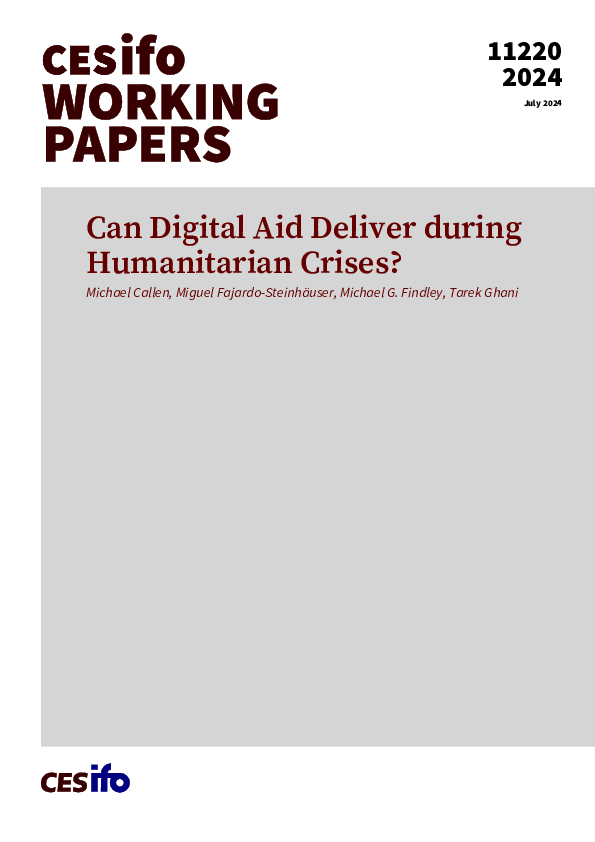Can Digital Aid Deliver during Humanitarian Crises?
CESifo, Munich, 2024
CESifo Working Paper No. 11220

Can digital payments systems help reduce extreme hunger? Humanitarian needs are at their highest since 1945, aid budgets are falling behind, and hunger is concentrating in fragile states where repression and aid diversion present major obstacles. In such contexts, partnering with governments is often neither feasible nor desirable, making private digital platforms a potentially useful means of delivering assistance. We experimentally evaluated digital payments to extremely poor, female-headed households in Afghanistan, as part of a partnership between community, nonprofit, and private organizations. The payments led to substantial improvements in food security and mental well-being. Despite beneficiaries’ limited tech literacy, 99.75% used the payments, and stringent checks revealed no evidence of diversion. Before seeing our results, policymakers and experts are uncertain and skeptical about digital aid, consistent with the lack of prior evidence on digital payments for humanitarian response. Delivery costs are under 7 cents per dollar, which is 10 cents per dollar less than the World Food Programme’s global figure for cash-based transfers. These savings can help reduce hunger without additional resources, demonstrating how hybrid partnerships utilizing digital platform technologies can help address grand challenges in difficult contexts.